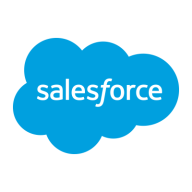

Find out what your peers are saying about Knime, Weka, IBM and others in Data Mining.
This saves a significant amount of time, particularly for reports that would have needed around fifty people.
The ROI of using Tableau extends to its seamless integration across various platforms, as it's from Salesforce and thus not limited to any specific cloud provider.
Tableau is saving me time, money, and resources, which I would rate as ten.
While they cannot always provide immediate answers, they are generally efficient and simplify tasks, especially in the initial phase of learning KNIME.
They provide quick email and phone responses and have Thai-speaking personnel.
There should be consistent standards for all users.
The technical support for Tableau is quite good.
Tableau is easy to use across various dimensions, whether on-premises or on the cloud.
The solution is fully scalable and performs well even with large datasets, provided there is proper supporting hardware.
Tableau is easy to scale.
The application hangs after continuous use due to the buildup of cache.
I rate the stability a five or six because Tableau updates very often with new versions or patches.
For graphics, the interface is a little confusing.
The machine learning and profileration aspects are fascinating and align with my academic background in statistics.
We cannot send the entire Excel file reports via email within Tableau.
The product owner should enhance its benefits or clarify its role.
It sometimes requires extensive investigation to determine why the data does not appear correctly.
Power BI as a much cheaper alternative.
A license for 150 users costs around $17,000 USD per year.
Looker is known to be quite expensive.
KNIME is more intuitive and easier to use, which is the principal advantage.
KNIME is simple and allows for fast project development due to its reusability.
A significant feature for me is the real-time connection to data sources because it effectively manages large data sets.
Tableau serves as a stable dashboarding tool for higher management, aiding in quick decision-making.
Building hyper extracts and visualization capabilities make Tableau a robust tool for data analysis.


KNIME is an open-source analytics software used for creating data science that is built on a GUI based workflow, eliminating the need to know code. The solution has an inherent modular workflow approach that documents and stores the analysis process in the same order it was conceived and implemented, while ensuring that intermediate results are always available.
KNIME supports Windows, Linux, and Mac operating systems and is suitable for enterprises of all different sizes. With KNIME, you can perform functions ranging from basic I/O to data manipulations, transformations and data mining. It consolidates all the functions of the entire process into a single workflow. The solution covers all main data wrangling and machine learning techniques, and is based on visual programming.
KNIME Features
KNIME has many valuable key features. Some of the most useful ones include:
KNIME Benefits
There are many benefits to implementing KNIME. Some of the biggest advantages the solution offers include:
Reviews from Real Users
Below are some reviews and helpful feedback written by PeerSpot users currently using the KNIME solution.
An Emeritus Professor at a university says, “It can read many different file formats. It can very easily tidy up your data, deleting blank rows, and deleting rows where certain columns are missing. It allows you to make lots of changes internally, which you do using JavaScript to put in the conditional. It also has very good fundamental machine learning. It has decision trees, linear regression, and neural nets. It has a lot of text mining facilities as well. It's fairly fully-featured.”
Benedikt S., CEO at SMH - Schwaiger Management Holding GmbH, explains, “All of the features related to the ETL are fantastic. That includes the connectors to other programs, databases, and the meta node function. Technical support has been extremely responsive so far. The solution has a very strong and supportive community that shares information and helps each other troubleshoot. The solution is very stable. The initial setup is pretty simple and straightforward.”
Piotr Ś., Test Engineer at ProData Consult, says, “What I like the most is that it works almost out of the box with Random Forest and other Forest nodes.”
Tableau is a tool for data visualization and business intelligence that allows businesses to report insights through easy-to-use, customizable visualizations and dashboards. Tableau makes it exceedingly simple for its customers to organize, manage, visualize, and comprehend data. It enables users to dig deep into the data so that they can see patterns and gain meaningful insights.
Make data-driven decisions with confidence thanks to Tableau’s assistance in providing faster answers to queries, solving harder problems more easily, and offering new insights more frequently. Tableau integrates directly to hundreds of data sources, both in the cloud and on premises, making it simpler to begin research. People of various skill levels can quickly find actionable information using Tableau’s natural language queries, interactive dashboards, and drag-and-drop capabilities. By quickly creating strong calculations, adding trend lines to examine statistical summaries, or clustering data to identify relationships, users can ask more in-depth inquiries.
Tableau has many valuable key features:
Tableau stands out among its competitors for a number of reasons. Some of these include its fast data access, easy creation of visualizations, and its stability. PeerSpot users take note of the advantages of these features in their reviews:
Romil S., Deputy General Manager of IT at Nayara Energy, notes, "Its visualizations are good, and its features make the development process a little less time-consuming. It has an in-memory extract feature that allows us to extract data and keep it on the server, and then our users can use it quickly.
Ariful M., Consulting Practice Partner of Data, Analytics & AI at FH, writes, “Tableau is very flexible and easy to learn. It has drag-and-drop function analytics, and its design is very good.”
We monitor all Data Mining reviews to prevent fraudulent reviews and keep review quality high. We do not post reviews by company employees or direct competitors. We validate each review for authenticity via cross-reference with LinkedIn, and personal follow-up with the reviewer when necessary.